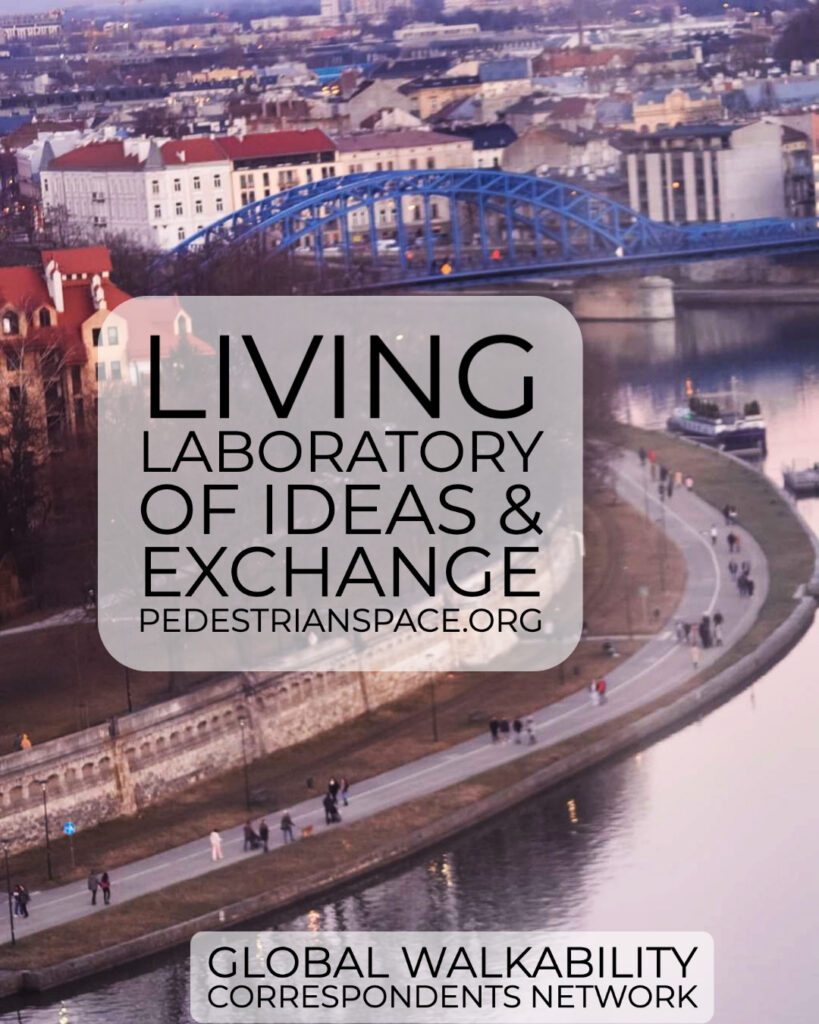
Working Groups in the Global Walkability Correspondents Network
THEMATIC GROUPS
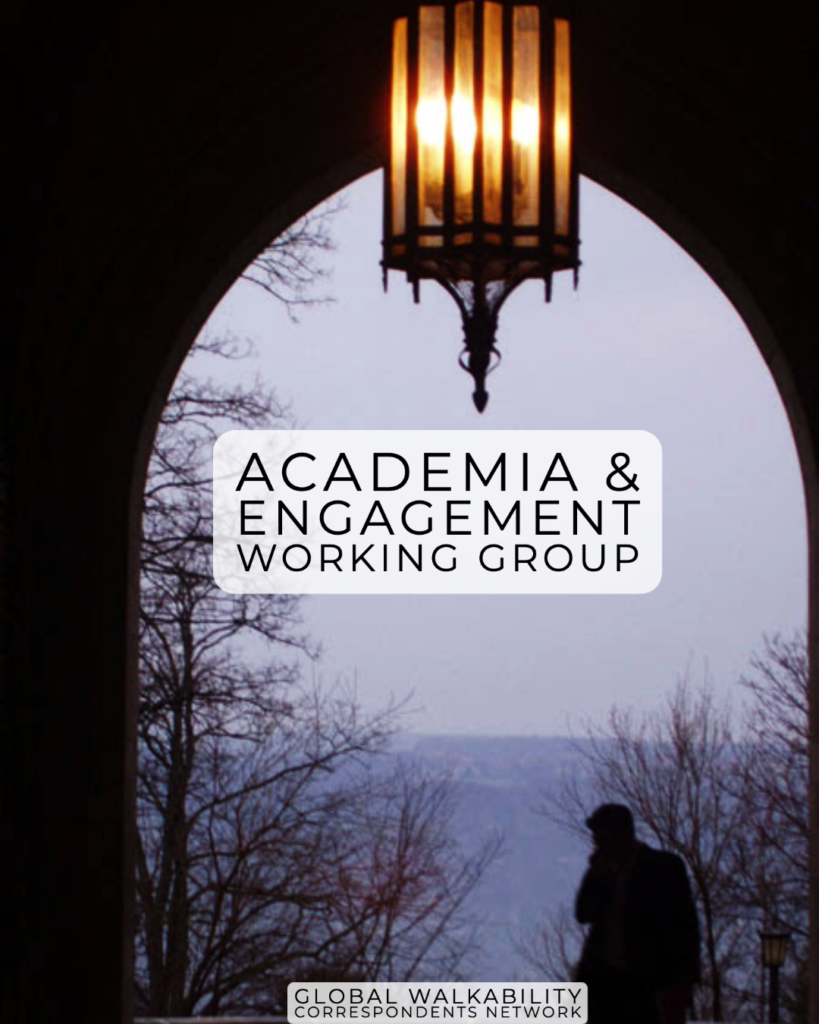
ACADEMIA & ENGAGEMENT + UNIVERSITY
Video on Group Mission by Nancy & Annika (June 2022)
University: Bachelors & Masters gather together in the Academia & Engagement group to explore walkability, transit, and urbanism through the lens of being a student.
Academia & Engagement: This group will look at the roadblocks, challenges, and opportunities in research and curriculum, as well as explore how research and the role of academia can be used to effect change and engage with the community.
ADVOCACY
This group explores local vs global dimensions of advocacy, looking at how local-level work can push for material change in one’s community, while global advocacy allows for sharing of best practices and reinforcing the ongoing discourse internationally.
- Looking at communication, storytelling and knowledge exchange as vital for the purpose of promoting awareness and change.
- Education across cultures about what walkability is and the importance of promoting and participating in a shift towards sustainable mobility
- Methods of promoting civic/public engagement as well as promoting policy change
- How to create a vocation thru your advocacy
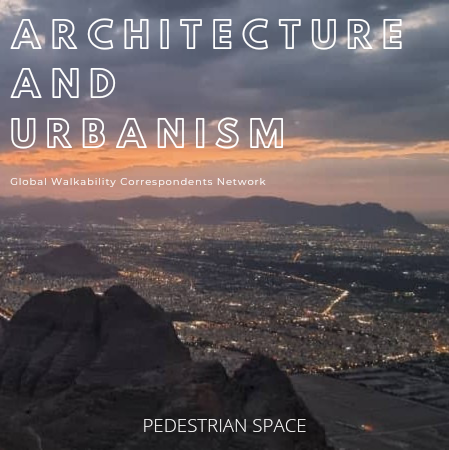
ARCHITECTURE & URBANISM
Video by Darrin on Group Mission (June 2022)
The Architecture and Urbanism Workgroup focuses on assessing the impact urban landscapes have on their communities and identifying best practices in creating thriving urban spaces. The group intends to do this through researching global architecture and its impact on the local communities, as well as sharing our findings through original content creation.
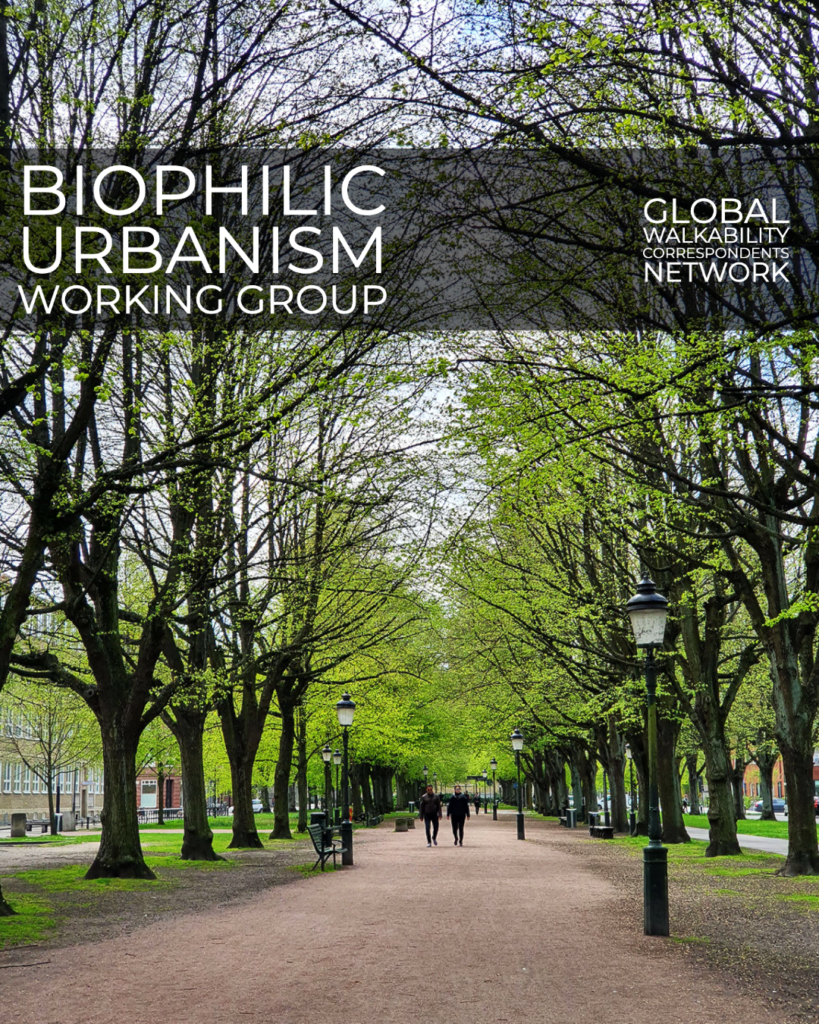
BIOPHILIC URBANISM
Video by Alvaro on Group Mission (June 2022)
Video by Sulochi on Group Mission (June 2022)
The Biophilic Urbanism working group explores the relationship between cities & nature with topics such as urban agriculture, green spaces & cities & urban heat islands. We are hoping to share knowledge and learn from each other, support the positive change & fast-track the positive change we currently see within cities.
- Urban & Community Gardens
- Blue Zones
- Food Deserts
- Food Justice
- Food Sovereignty
- Farmer’s Markets
- Urban Agriculture
- Urban heat islands
- How nature-based solutions can be a critical part of the equation for developing healthy cities & communities
- The role of green spaces for climate-resilient urbanism
- How the pandemic exposed great inequity in access to green space in many cities
- Equity in tree coverage & shaded paths
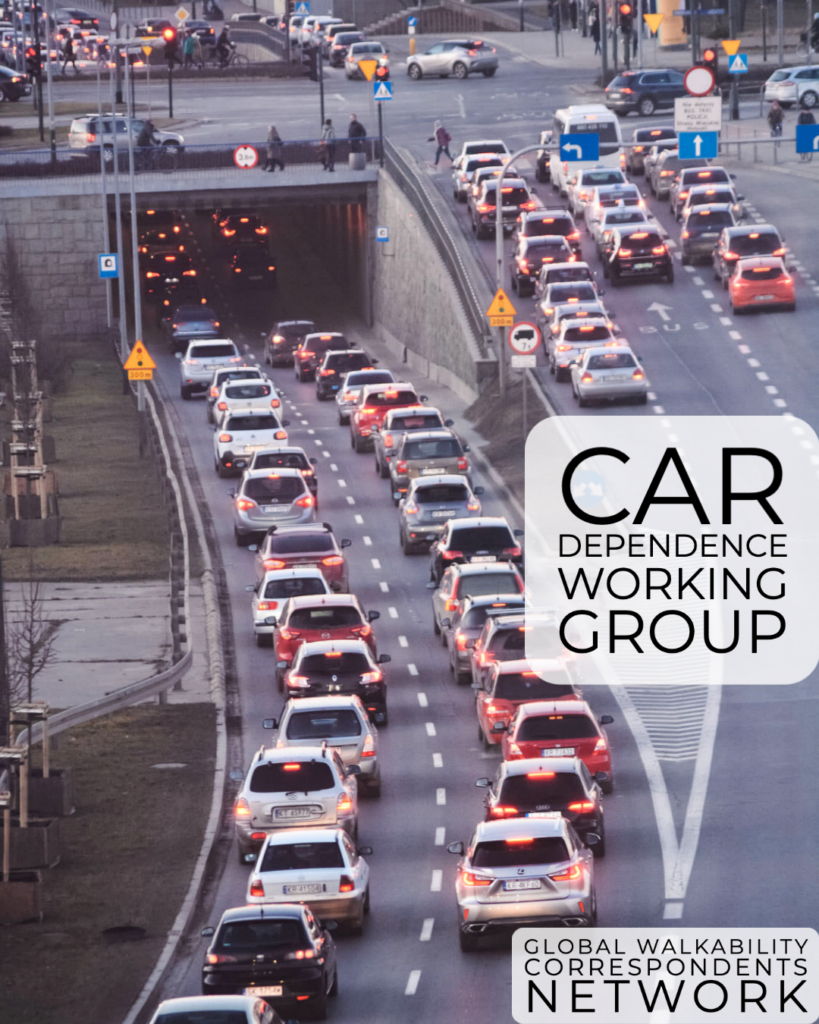
CAR DEPENDENCE
The Car Dependence working group explores topics including:
- Understanding the root causes of car dependence
- Looking at the role of parking in our mobility ecosystem and exploring how the allocation of space to parked vehicles can have a significant impact on the walkability of cities.
- Exploring what the first concrete and effective steps are that one can take to push for a systematic change in the paradigm shift
- Exploring what urban professionals and municipalities can do to respond to the significant growth of car dependency in residential areas
- Exploring what municipalities are doing to encourage people to use other modes of transportation
- Exploring how individuals can advocate for improved walkability and public transit options in areas with car dominance
- Exploring the reasons why people don’t leave their car behind and walk or take public transport when the infrastructure (walking paths, public transport etc) exists (i.e. how can we inspire change of long-standing habits)
- How car dependence affects people who don’t use cars
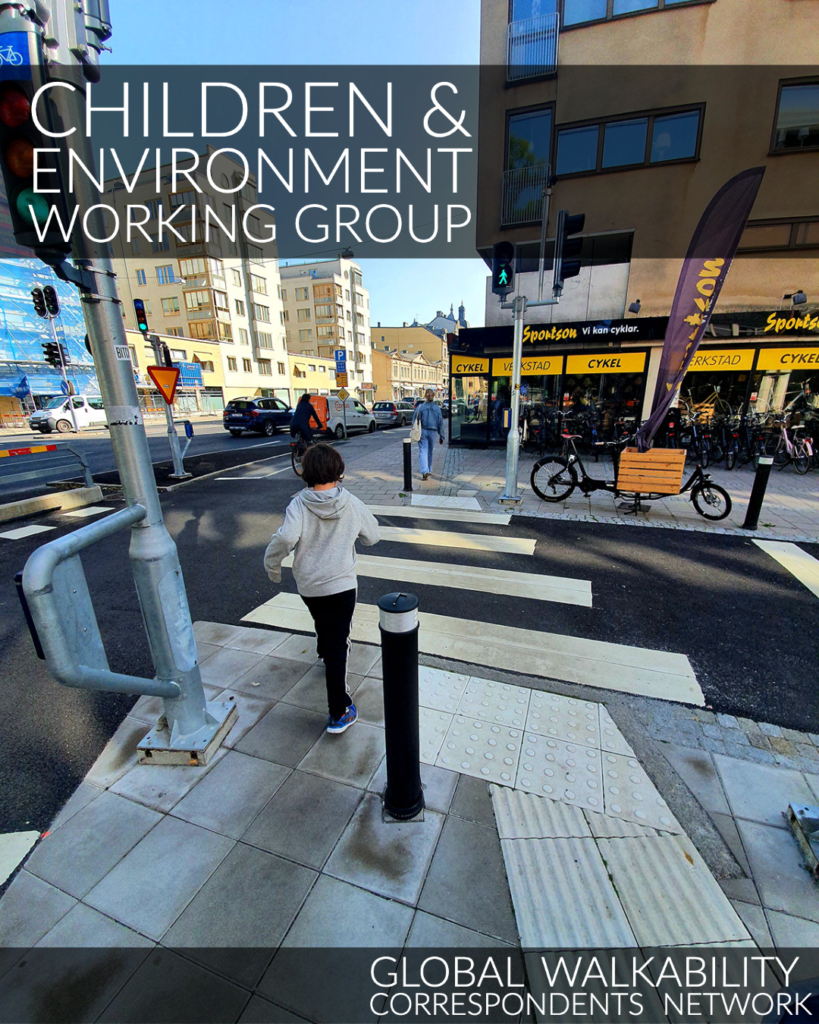
CHILDREN & ENVIRONMENT
- access to safe, quality play spaces
- generational change in the accessibility pattern of neighborhood green spaces
- incorporating views and voices of children into urban and community development
- environmental psychological view of youth in cities
- play streets
- safe routes to school and school streets
ENGINEERING
The mission of this group is to change the conversation with people who say things “can’t be done for pedestrians” or those who forget about walking as a mode altogether to to “how can we engineer places to become great for people walking, wheeling and other slow mobility speeds.”
INTERNATIONAL SOCIAL URBAN SPACE COLLABORATION
This group is devoted to improving international research collaboration and education experiences on the social dimension of urban spaces.
MEDIA, URBANISM & MOBILITY
This group looks at the role of media and urban communications in the discourse on aspects of urbanism and the mobility paradigm shift.
PEDESTRIAN DATA COLLECTION TOOLKIT
Video by Boopsie on Group Mission (June 2022)
The goal of the Pedestrian Data Collection Toolkit group is to have some qualitative survey questions free to share as ideas for anyone researching pedestrian experience or undergoing research in the area of pedestrian experience or safety design. We’re also hoping to have three tiers rural, urban, and developing but densely populated urban areas, as questions vary for each context
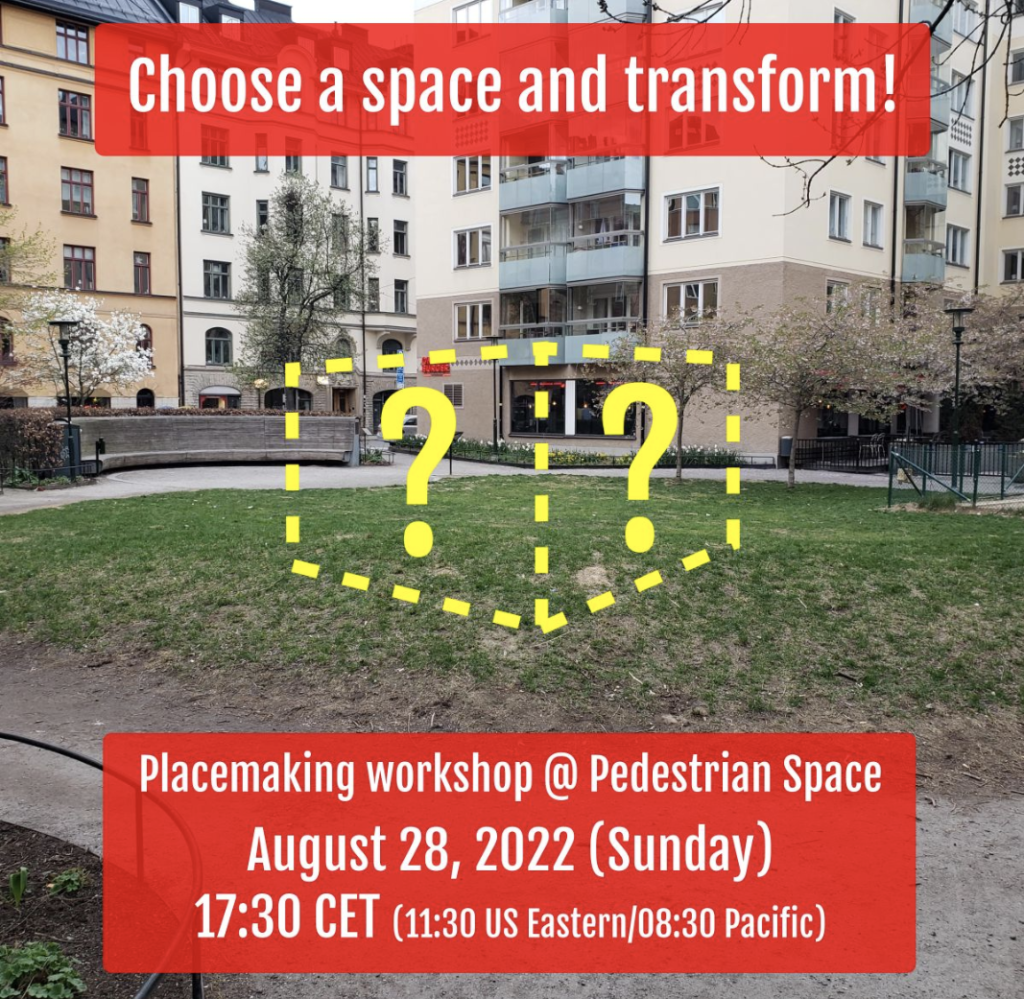
CREATIVE URBANISM
Video by Raphael on Group Mission (June 2022)
Placemaking is an evolving practice that connects people with places. The placemaking working group is for you as placemakers to come together, learn from each other, and get inspiration for projects.
Video by Brianna & Mohammad on Public Art Group Mission (June 2022)
This group looks at how public art can promote walkability in different regions. The group will periodically focus on a different form of public art and how it influences local culture, the city and in turn how the city and local culture influence different art styles.
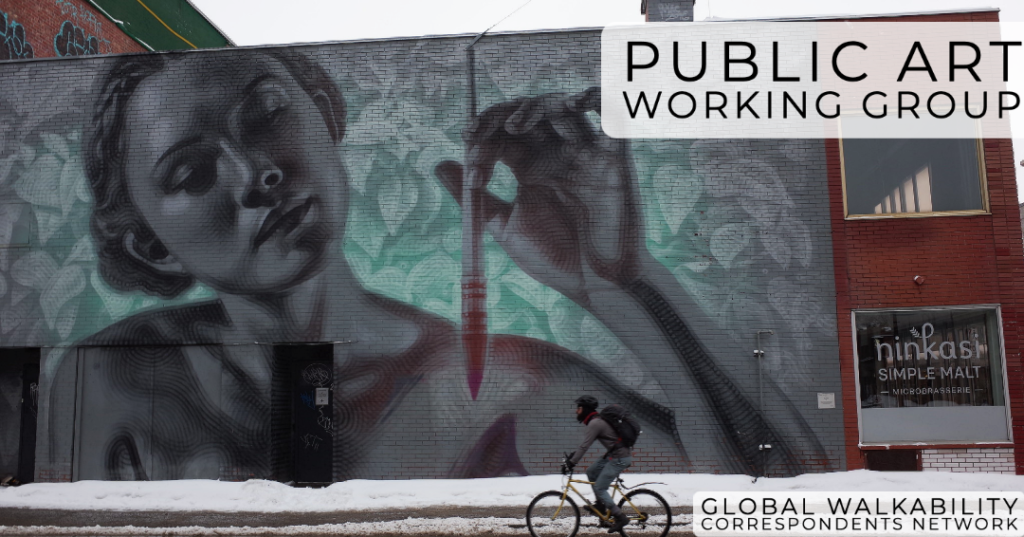
PUBLIC HEALTH & WELL-BEING
Video by Nicole on Group Mission (June 2022)
The Well-Being & Health Walkability group aims to explore how walkability relates to the well-being and health of those in our community and what actions we can take to communicate these benefits of walkability as well as advocate for better-built environments that naturally encourage and protect pedestrians.
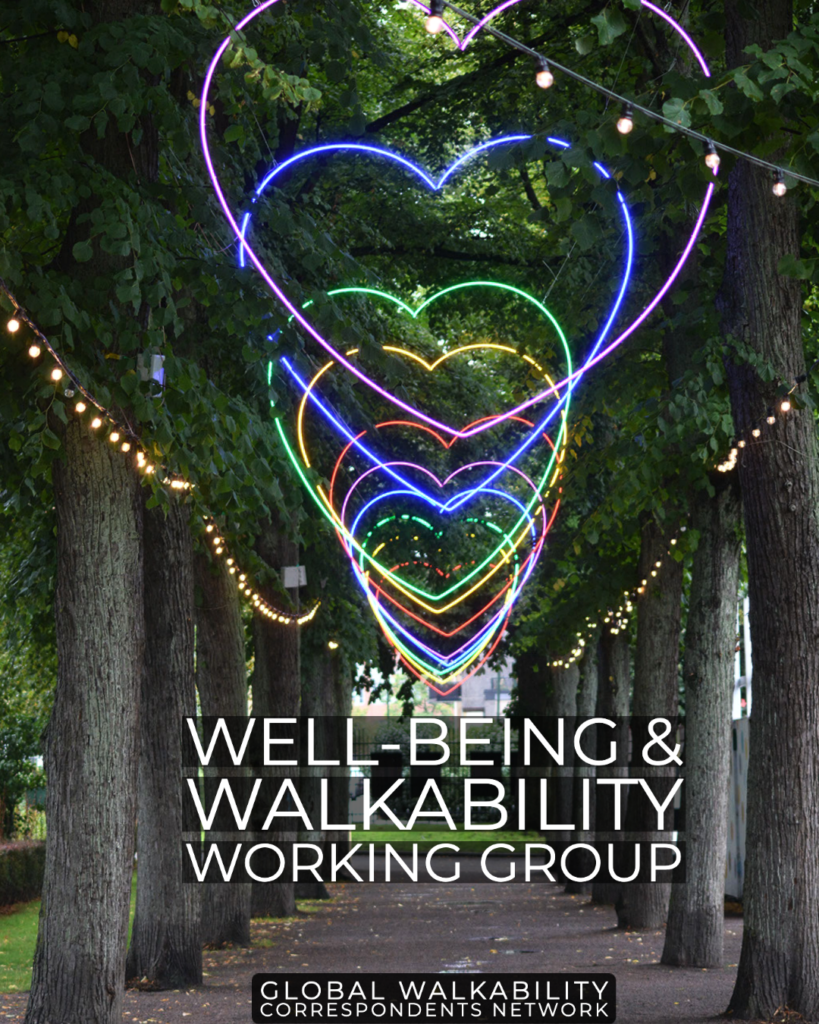
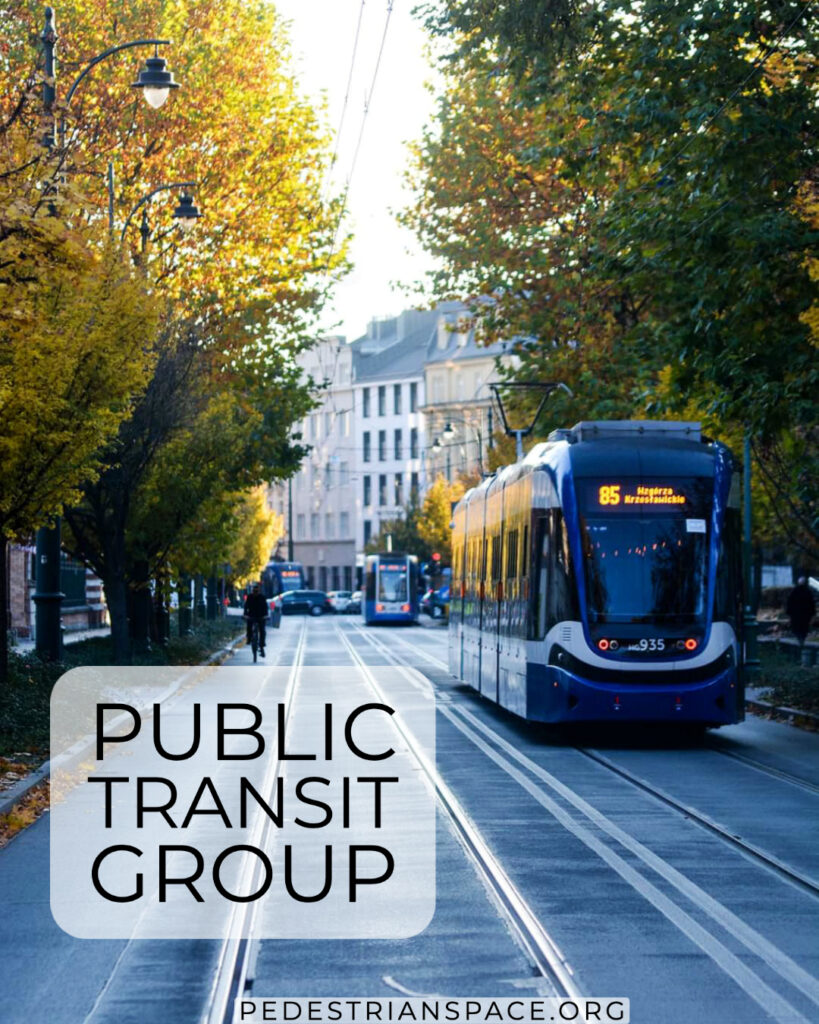
PUBLIC TRANSIT
Video by Marcela on Group Mission (June 2022)
The Public Transit group explores topics including:
• Post COVID recovery: how can we get riders back on the bus and how do we adjust service to serve riders that need public transportation.
• Changing the perception and breaking the stigma of public transportation
•Connecting public transit and other modes so people can have the ability to choose which is the right mode for them instead of relying on single-occupancy vehicles.
•Increasing the rate of passengers, in order to enhance the economic viability of the transport system
•Synchronizing walkability and last-mile connectivity
•Relationship between public transit and placemaking
PRESENTING & PUBLIC TALKS
SAFETY
The goal of this group is to research and explore safety and security considerations – at both the infrastructural and individual level – of a wide range of people, identify the greatest risks, examine global themes and empower pedestrian advocates at the local level.
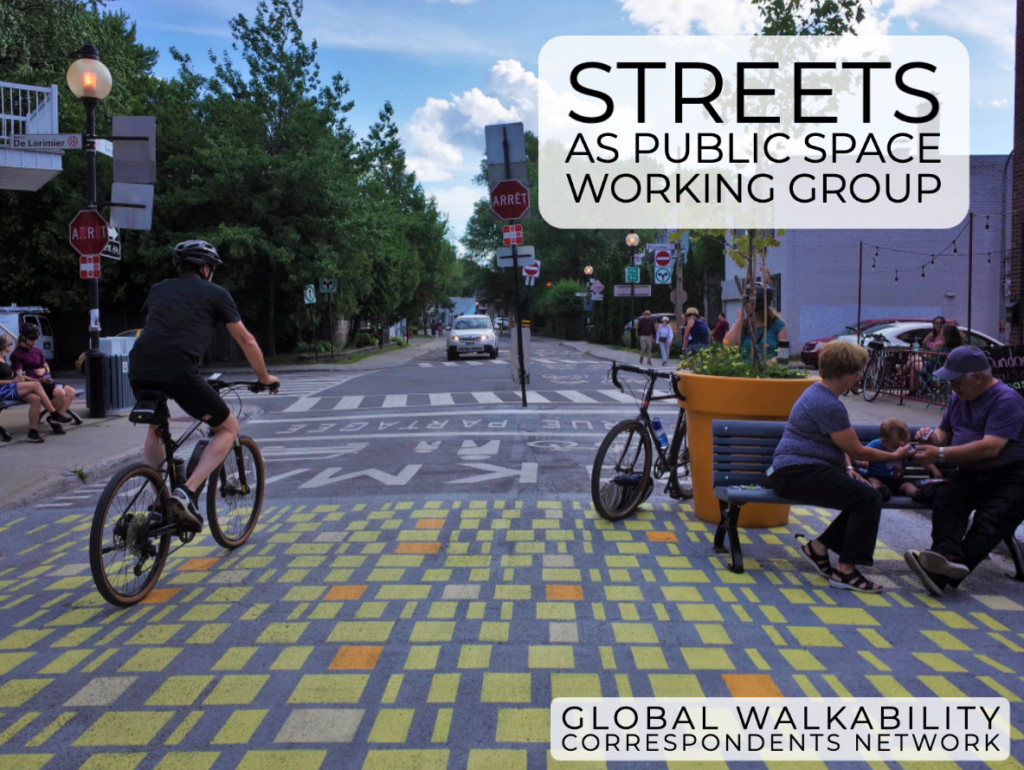
PUBLIC SPACE & BUILT ENVIRONMENT
Video by Zvi on Group Mission (June 2022)
Streets typically make up between one-quarter and one-third of a city’s built environment, yet we rarely consider that streets are public space. In fact, streets are the most important public space that cities possess! The goal of this working group is to encourage awareness and reflection around the subject of streets as public space.
Topics covered include:
- What is public space?
- Who decides how it should be used?
- How can we acheive a more equitable allocation of street space?
- How can we negotiate conflicts over competing uses of limited space?
- Can the recognition of streets as public space stimulate larger conversations about concepts such as the ‘commons’ and the ‘public good’?
We love a good public space to walk, exercise, play, and enjoy with friends. But what if the solution for good places is not ‘per-se’ the design, but the policies, governance and management processes behind their physical appearance? This is exactly what this research group aims to discuss: the dynamic relations between practitioners and researchers involved in the (re)development of urban public spaces.
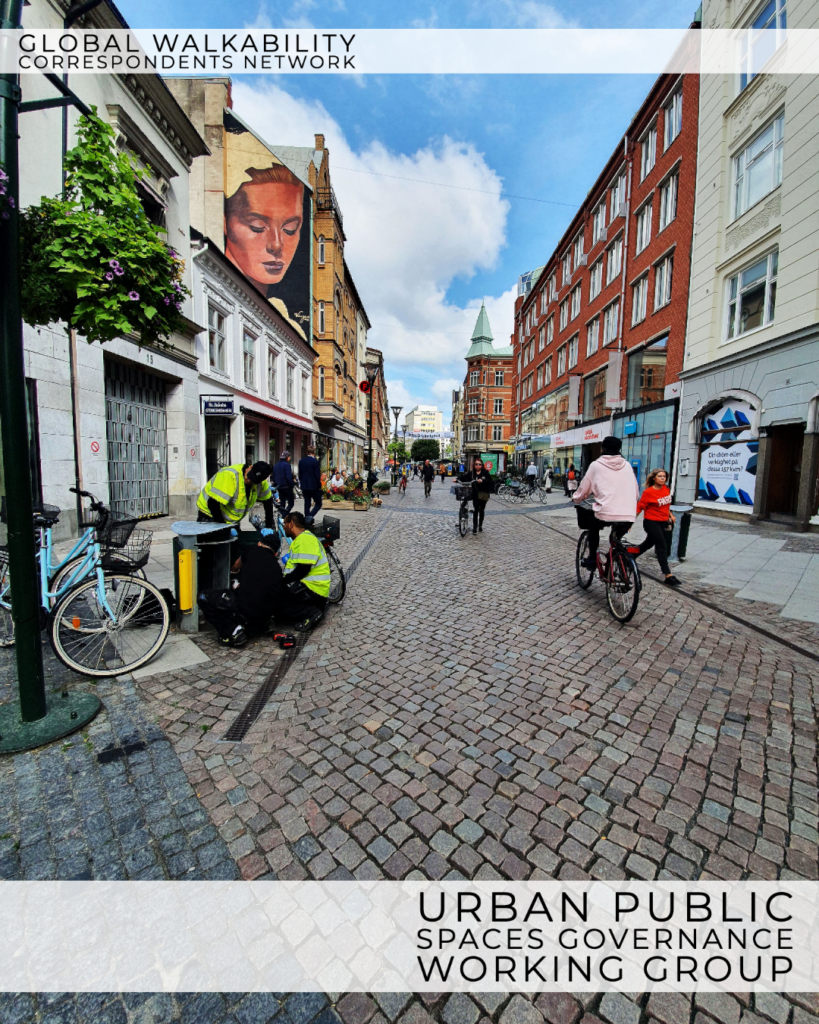
WALKABLE ECONOMY
Video by Darrin on Group Mission (June 2022)
The Walkable Economy working group explores the benefits of pedestrian and bike-friendly communities for local businesses and economy.
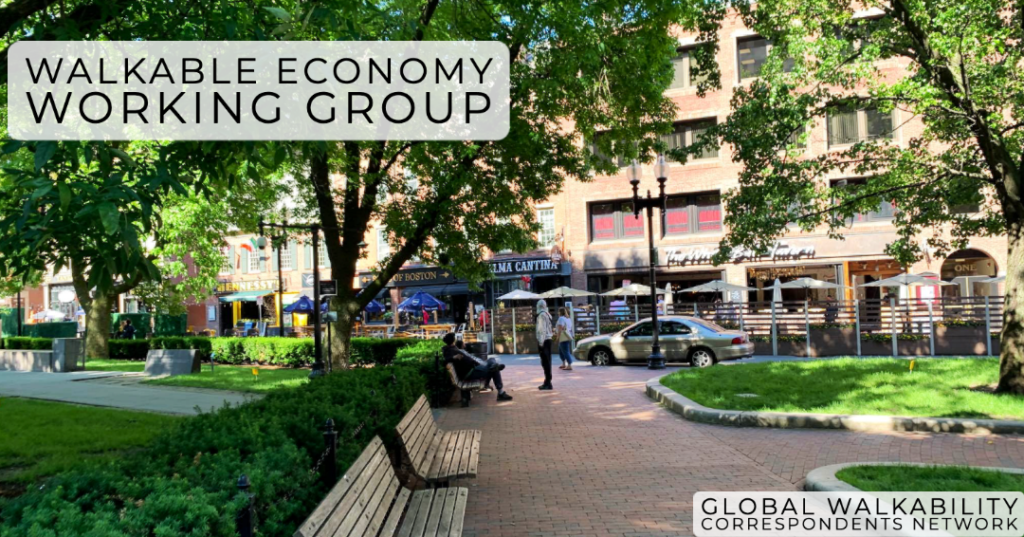
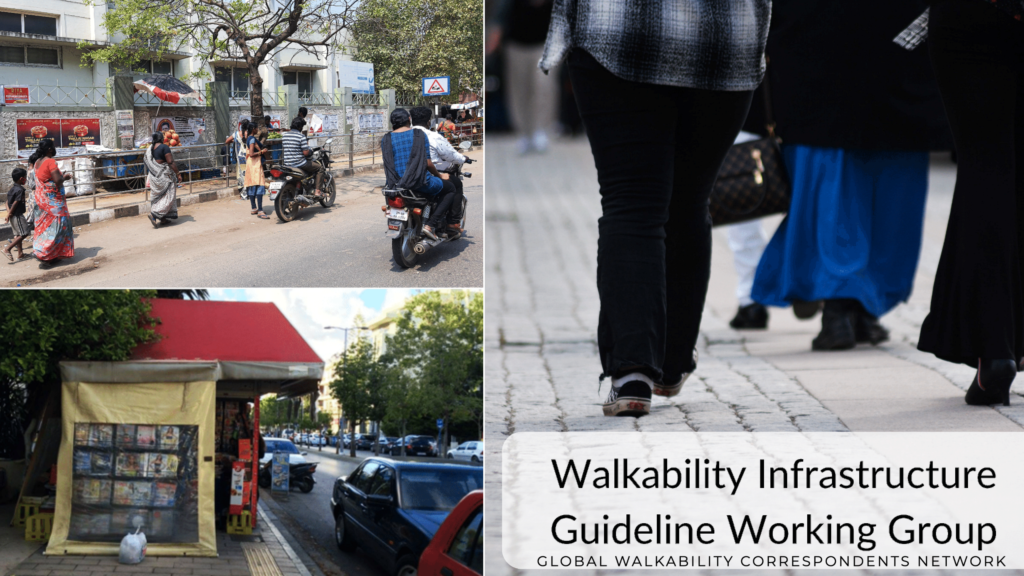
WALKING INFRASTRUCTURE GUIDELINE
Video about Group Mission by Maria, Nancy & Nicole (June 2022)
The Walking Infrastructure Guidelines Working Group is focused on exploring guidelines for walking infrastructure from all over the world to identify and recommend best practices.
REGIONAL & LANGUAGE-BASED GROUPS
AFRICA
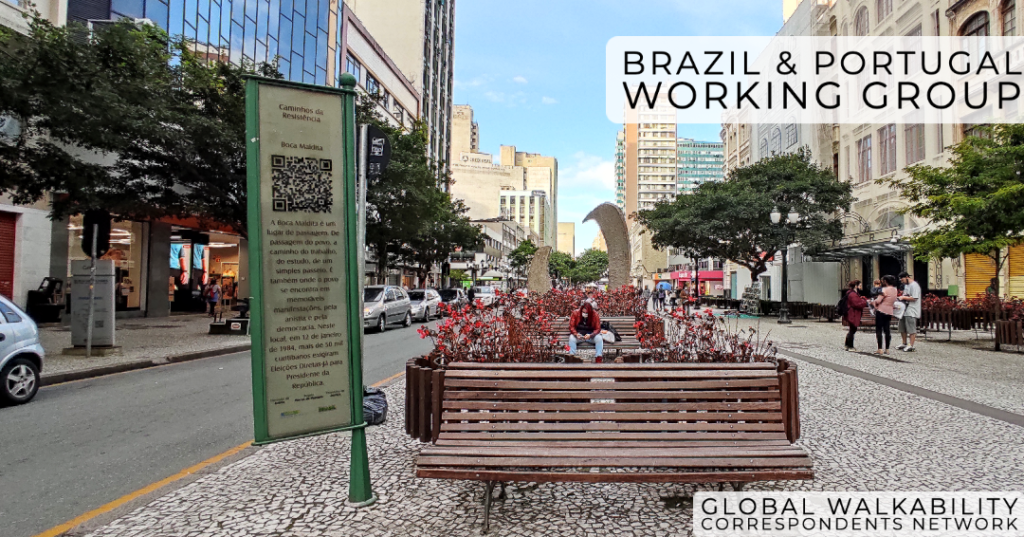
BRAZIL & PORTUGAL
Video about Group Mission by Andrea (June 20229
We are a group of Architects and Urban Planners who live in different states of Brazil and in Portugal and want to know about initiatives that promote walkability in cities in Brazil, Portugal and all over the world. Our main objectives are to know, discuss and spread experiences already in motion, verifying which strategies are more suitable to apply in the context of cities in Brazil and Portugal.
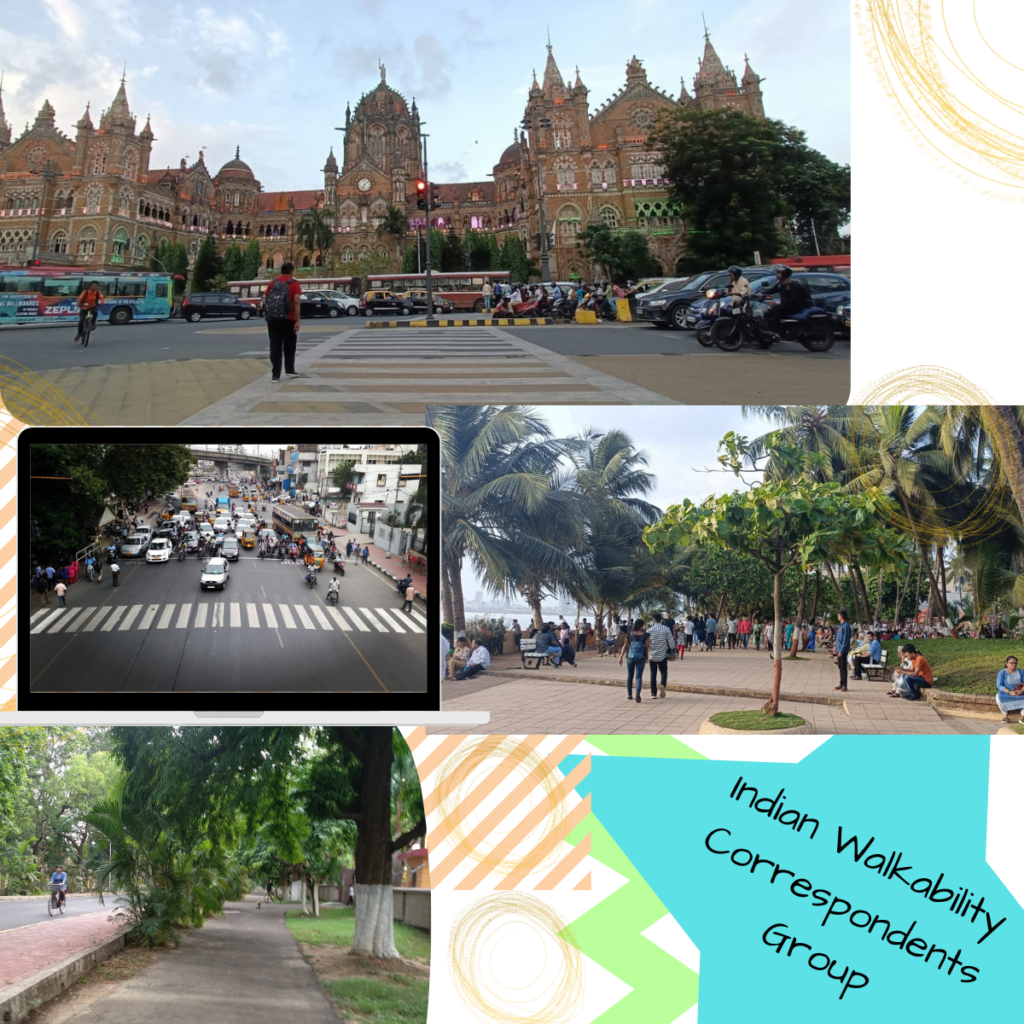
CANADA
EAST ASIA /AUSTRALASIA
FRANCOPHONE
INDIA
Video about Group Mission by Nancy, Argho, Rituparna & Gautam (June 2022)
We are a diverse group of Indians who all share the goal of making our communities better places to live and work. India is diverse and so are the conditions in local communities and towns. Our group intends to bring together the differences in our backgrounds to work on the smallest changes that individuals or organizations can bring about to tackle the imminent issues of climate change, public health and urban resilience that India is currently facing.
NORDICS
SOUTH ASIA
SPANISH SPEAKING GROUP
USA
GROUP LEAD INSIGHTS
“It is good to ask ‘What are your expectations for the group’? What are your goals? What would you like to be the output of your group?’ –Maria Siti on setting goals for group expectations and vision (Group Lead for Walking Infrastructure Guidelines, Greece Correspondent)
“Always be in a position where you can meet most participants’ needs and learn from others. Learning from others is really exciting!” –Mohammad Nikkhah on what he finds exciting about being a lead (Group Co-Lead for Public Art, Isfahan Correspondent)
“As a lead, I meet up with most of the group members individually, giving me insights on their work and sharing my work. This has helped me and has allowed me to help the members both individually and as a group. It also helps in organizing or selecting times for meetings.” –Nancy Deborah on best practices organizing (Group Lead for India and Co-Lead for Academia & Engagement, Madurai Correspondent)
“It is encouraging, inspiring and learning from other placemakers and exploring the evolving practice together as a group. It’s strengthened my confidence in leadership very much, while also training me in people skills and humility.” – Raphael Mak on what he finds engaging about being a lead (Group Lead for Placemaking, Stockholm Correspondent)
“I love being able to connect with people and facilitate so many ideas into a constructive project.” –Brianna Lelieur on what she finds exciting about being a lead (Group Co-Lead for University & Group Co-Lead for Public Art, Central Coast & Bay Area Correspondent) “
“I think the most important thing for most meetings is having a strong moderator and a flexibly structured agenda to ensure conversations are productive and not dominated by a couple of individuals.” –Anar Salayev on insight about moderating meetings (Group Lead for Advocacy, San Diego Correspondent)
“I love working cross-culturally.” -Darrin Wasniewski on what he finds engaging about being a lead (Group Lead for Walkable Economy and Architecture + Urbanism, Madison, WI Correspondent)
“Learning about ways to support members in adapting the materials to their unique global context and learning about all the members’ experiences and backgrounds. I am really enjoying the time we connect and learn about the diverse issues in India Marketplaces or Jordan streets and how we can create multiple versions of a survey to really consider a cultural awareness that has a huge privilege of being informed from relationships within the group.” -Boopsie Maran on experience as a lead (Group Lead for Pedestrian Data Collection Toolkit, Auckland Correspondent)
“I think that the question about goals is particularly important: how to set them, and how to divide the work to reach them.” –Alvaro Contente on setting goals and vision for groups. (Group Co-Lead for Biophilic Urbanism, Chile Correspondent)
“It’s great to meet other people and learn about the struggles and successes they have in their communities.” –Marcela Moreno on what she finds engaging about being a lead (Group Lead for Public Transit, Washington DC Correspondent)
